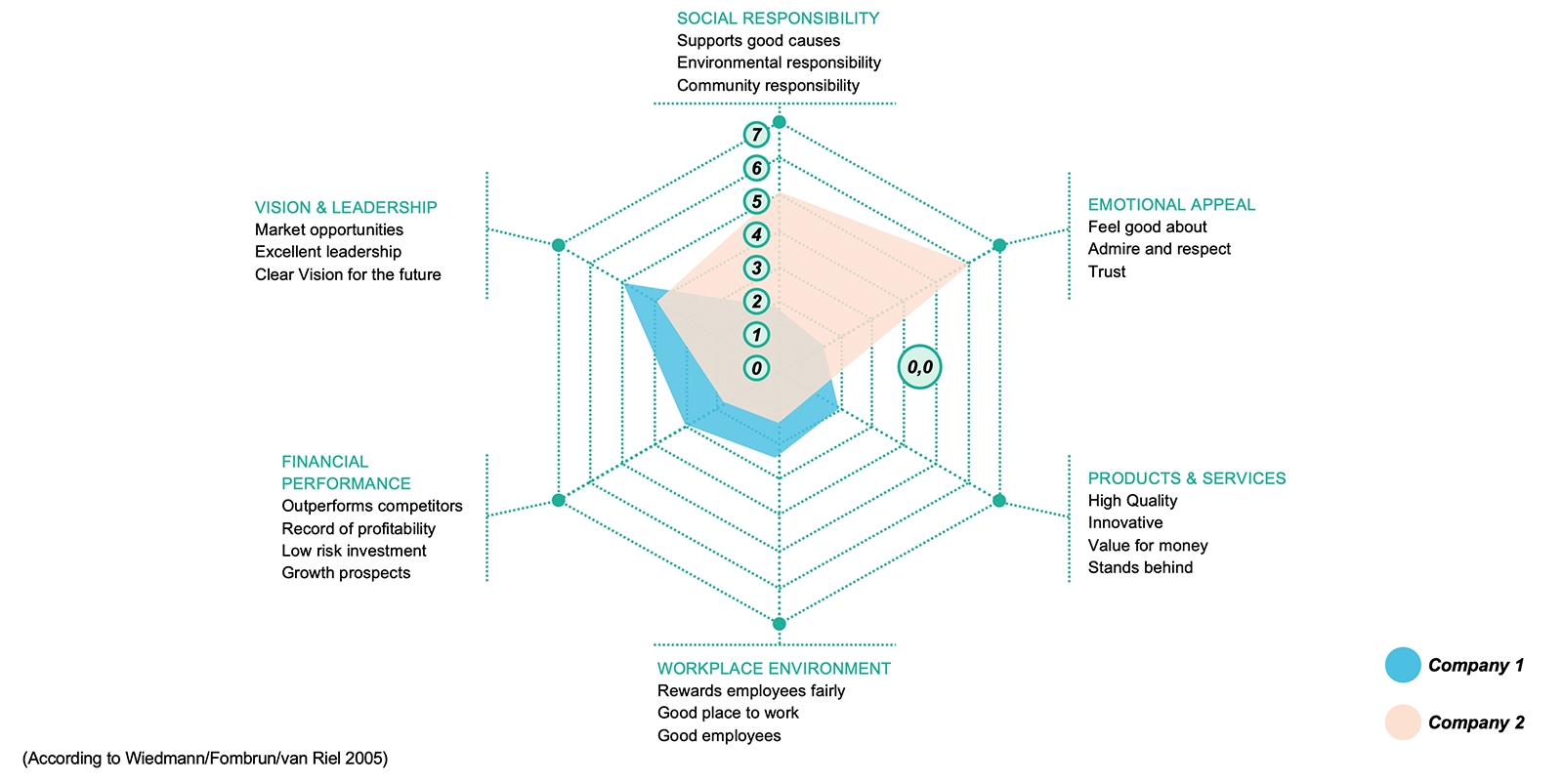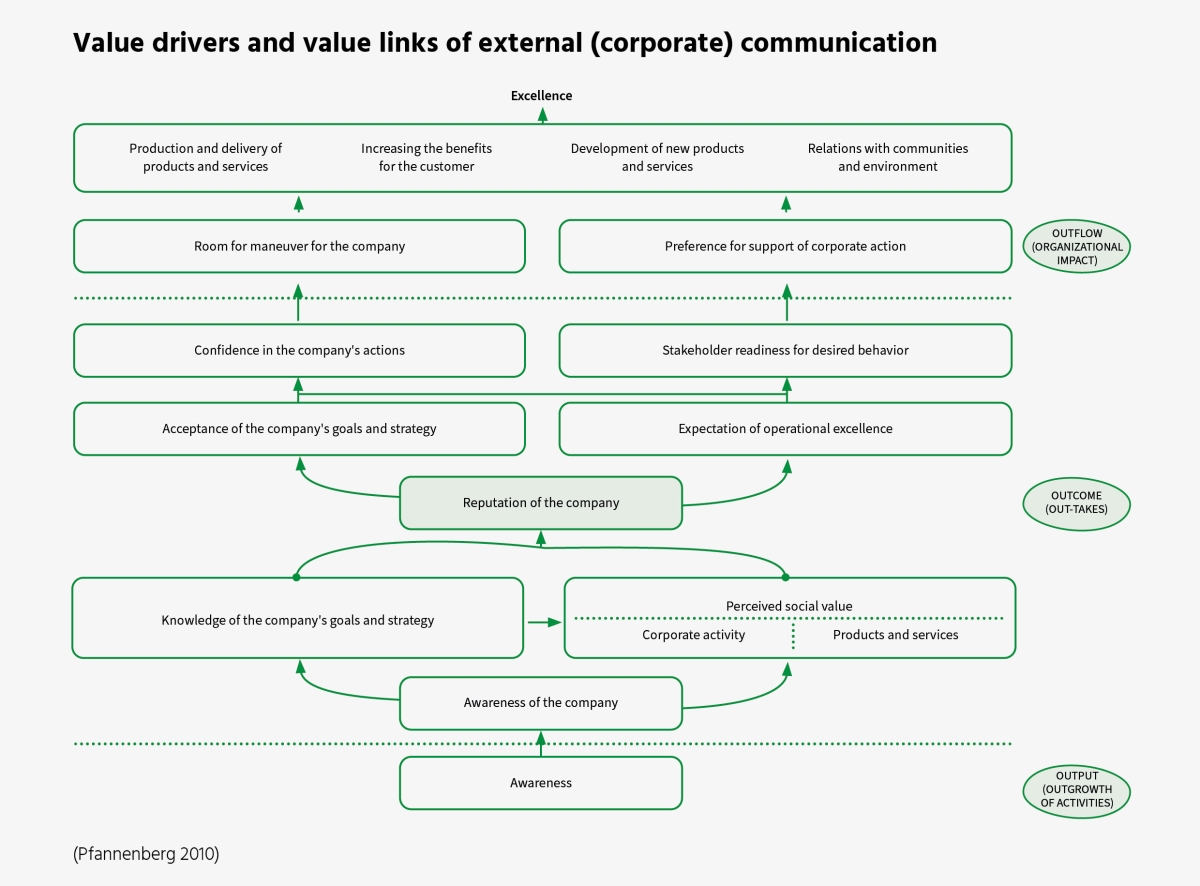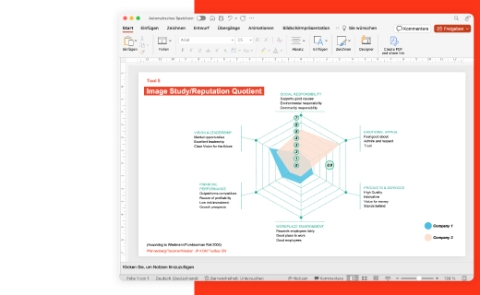Image Study/Reputation Quotient

Guiding question
How is the company regarded by key stakeholders?
Objectives
- Determine the perception (image) of the company among stakeholders
- Assess the support potential for the company's strategy and plans
- Identify and localize reputational risks
- Provide data for the controlling of communication
Implementation
Reputation/image surveys are offered by numerous service providers on a national and international level. There are also reputation rankings conducted by the media – currently especially in the area of employer branding. Data are most often collected through stakeholder interviews; support from content analysis of published opinion can be helpful.
When selecting the research method and the service provider, the benchmark capability of the collected data and also the data pool of benchmark companies relevant for the client (e.g., from the same industry, of similar size, with similar tasks, operating in the same regions) play an important role. These comparisons improve the validity of the data.
A standardized and highly benchmarkable concept for measuring corporate reputation is Fombrun's reputation quotient: It surveys 20 items in six groups: The company's reputation in these dimensions is surveyed among stakeholders such as investors, customers, employees and public opinion leaders. The survey results are condensed into an index figure – the Reputation Quotient.
This is how you work with the reputation quotient:
- The main competitors in the company's markets are determined.
- Relevant data is collected on the company itself and its peer companies/competitors.
- Detailed analyses are performed, the reputation quotient is formed.
- This is followed by benchmark analyses of markets and regions, and if necessary also of situations such as mergers & acquisitions.
Theory: Reputation
Reputation is the "generalized, collective assessment of an object" (for example, a company or a corporate brand) by stakeholders. Reputation is made up of the images and attitudes in the minds of stakeholders; it is formed through their perceptions, experiences and evaluations - in direct contact between companies and stakeholders as well as through third parties, i.e. the media and other stakeholders. (Liehr/Peters/Zerfaß 2010)
The Reputation of the company/the reputation of the corporate brand influences the Acceptance of the stakeholders for the company's objectives, but also the Expectation of operational excellence in the realization of these objectives. Consequently Reputation a driver for the Trust in the company's courses of action and for the Stakeholder readiness, to behave in accordance with the company's expectations. In this respect, reputation is "an indicator of the future behavior of the stakeholder groups towards the reputation object. They can be used to derive statements about the extent of the support potential of stakeholders vis-à-vis the object of the reputation" (Liehr/Peters/Zerfaß 2010) – and thus for the company's scope for action in realization of Operational excellence, e.g., in the construction of a new production facility or in change projects.
Obviously the Awareness of the company, which is knowledge of its goals and strategy, as well as the Perceived social value contributions of the company's activities and its products and services are drivers of the Reputation (cf. Pfannenberg 2010).

